I’m in New York till Oct. 10. Posts unlikely till I get back.
(Image via)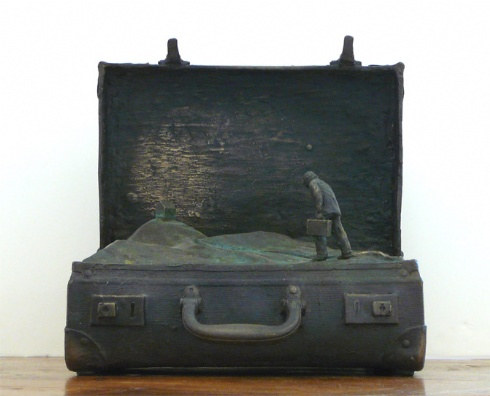
Regina Hackett takes her Art to Go
I’m in New York till Oct. 10. Posts unlikely till I get back.
(Image via)
With the fall of Howard House and other spaces shaky on their pins, the appearance of two promising newcomers is heartening news. Norman Lundin and Robert Yoder will open their own galleries this fall, each devoted to other artists.
Lundin is represented in Seattle by Francine Seders Gallery, where his exhibition, Gray Light: Four Years of Painting, continues through Oct. 3. (My review here.)
Lundin, Arctic River at Night oil / canvas, 2010
24 x 36″
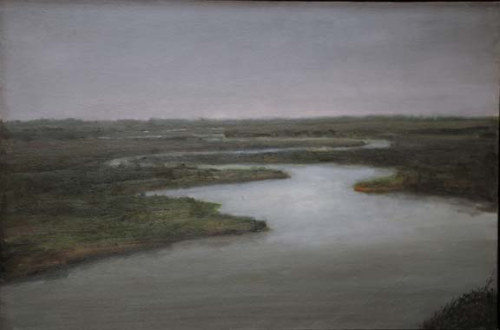 The title of Lundin’s new venture is Prographica: Fine Works On Paper.
The title of Lundin’s new venture is Prographica: Fine Works On Paper.
Lundin:
I am developing it in association with Francine Seders. Also, the Koplin Del Rio Gallery in LA, which has represented my work for many years. Both galleries are helping me get up and running; they’ve given me practical advice, offered me their mailing lists as well as their considerable marketing savvy
The gallery will specialize in contemporary drawings, photography, and other fine works on paper.The art will range from straightforward traditional realism to work that is quite abstract. Of the artists represented some will have substantial professional achievement, there will be too, those artists whose reputations are emerging. I am aiming toward an opening in November; the first show will be a group one. This show will be important, as it will be the exhibition that gives the gallery its character.
Launching a gallery in the current economy is a chancy undertaking to be sure.I have, though, sufficient funding to get the gallery off the ground and through the first couple of years, which may indeed be lean. The address is:
3419 East Denny Way, Seattle 98122.
I should add that my own work will not be represented by the gallery.
Yoder was represented in Seattle by Howard House.He opens at Frosh&Portmann in New York Oct. 7.
Yoder Front Loading collage, 2010, 11 x 8.5 inches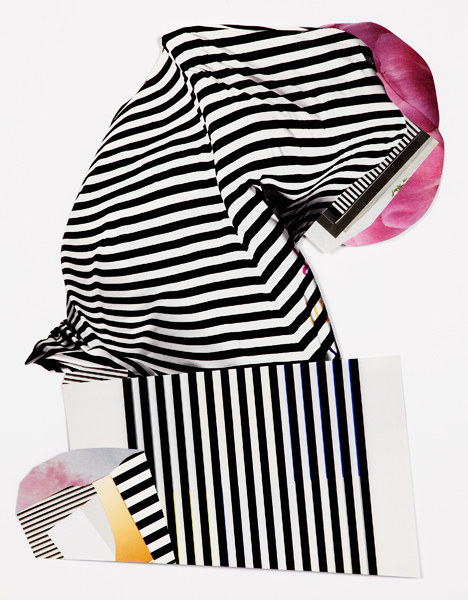 Yoder’s motivation for opening his space is to offer more of the work he’d like to see in Seattle but doesn’t, save for shows at Ambach & Rice and a few others, art that he thinks isn’t quite as safe as what’s usually on offer. Like Lundin, Yoder will not show his own work.
Yoder’s motivation for opening his space is to offer more of the work he’d like to see in Seattle but doesn’t, save for shows at Ambach & Rice and a few others, art that he thinks isn’t quite as safe as what’s usually on offer. Like Lundin, Yoder will not show his own work.
Yoder:
It is with great pleasure that I announce the opening of SEASON on Sunday Oct 17 from 2-5 pm.
Season will host two solo shows four times a year at 1222 NE Ravenna Blvd, Seattle Washington.The inaugural show
– PARTY AND PARTY AND PARTY AND FUCK AND PARTY –
will feature watercolors by Natalie Häusler
and sculpture by Jesse Sugarmann. Häusler, born in Munich, Germany, resides in New York, New York. Sugarmann, born in Danbury Connecticut, resides in Eugene, Oregon.
Martina Sauter is all about conjunction. Her photos are a collage of film stills from Godard, Hitchcock and Lynch, random shots taken in her daily life, views from her studio as well as her bleak back yard. What she makes of her composites is not seamless. The edge of a wall has its own thick edge, and the interior is recessive.
Schwarzer Rock 2010 Dual panel C-print, 11.75″ x 9.25″
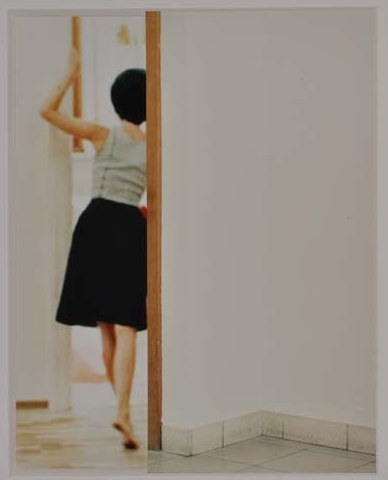
Teppich 2006 Dual panel C-print behind Plexiglas, 38.25″ x 47.25″
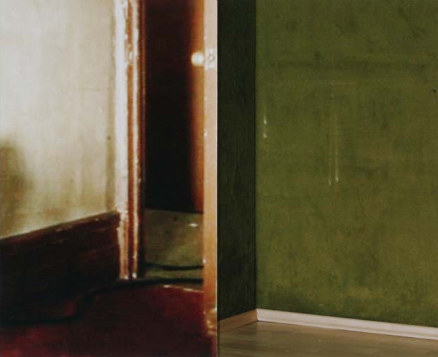 In Turundlandschaft, a door opens onto wallpaper in the artist’s studio. It’s a mountain with no cliffs of fall, available by the yard at a home decorating store. In a photo, already flat, Sauter could have restored a sense of volume. Instead, she took the Lynch road to lurid, cranking up the color of the ground. She has no wish to trick anybody, yet within her contrivances is a sense of the tragic.
In Turundlandschaft, a door opens onto wallpaper in the artist’s studio. It’s a mountain with no cliffs of fall, available by the yard at a home decorating store. In a photo, already flat, Sauter could have restored a sense of volume. Instead, she took the Lynch road to lurid, cranking up the color of the ground. She has no wish to trick anybody, yet within her contrivances is a sense of the tragic.
Cold, impossible, ahead
Lifts the mountain’s lovely head,
Whose white waterfalls could bless
Travelers in their last distress.
Auden – 1936
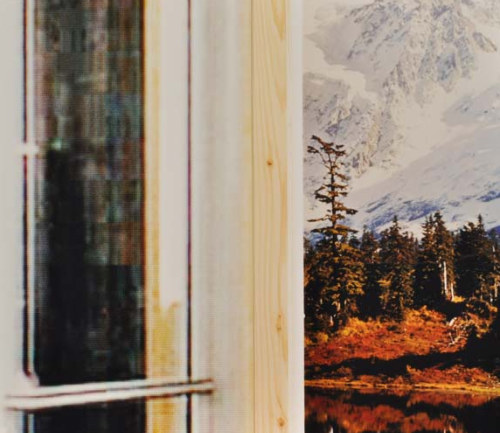 On the left in Hofmauer, brick from the artist’s backyard. In the center, an alley from Hitchcock. The blur of the blue throws the dark brick in high relief.
On the left in Hofmauer, brick from the artist’s backyard. In the center, an alley from Hitchcock. The blur of the blue throws the dark brick in high relief.
Hofmauer 2006 Dual panel C-print behind Plexiglas 39″ x 53 “
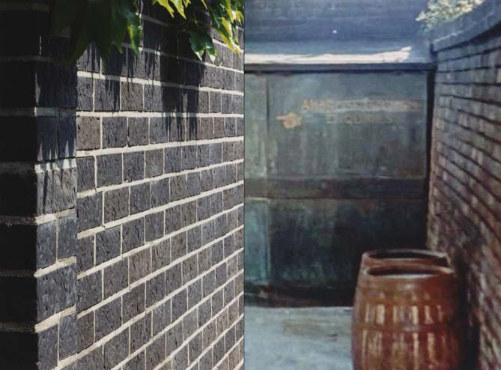 Sauter’s Shapely Shadows and a New Apartment at Ambach & Rice through Oct. 31. She lives in Düsseldorf; this is her first solo exhibit in the U.S.
Sauter’s Shapely Shadows and a New Apartment at Ambach & Rice through Oct. 31. She lives in Düsseldorf; this is her first solo exhibit in the U.S.
Mike Simi‘s I Drink Alone is a memorial to his dead father. The cup is glazed with his father’s ashes.
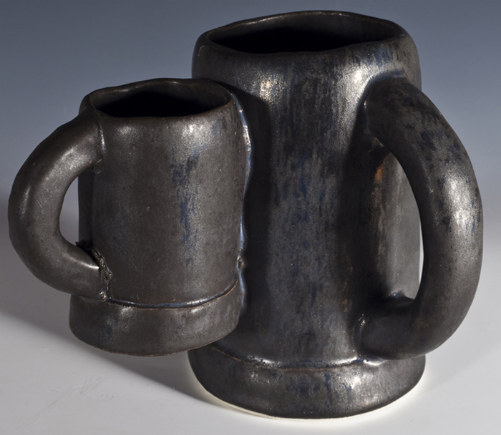 Watch the video here – driving drunk in honor of the dearly departed. Simi grew up in Newberry, Michigan, in a family full of prison guards – father, uncles, brothers. He’s an artist in Seattle.
Watch the video here – driving drunk in honor of the dearly departed. Simi grew up in Newberry, Michigan, in a family full of prison guards – father, uncles, brothers. He’s an artist in Seattle.
To earn it, clocks are punched and shirts are pressed.
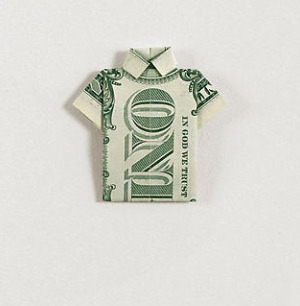 Few jobs are secure. You may do your able best, but you’re still going to be fired. Then you’ll hole up by yourself and think it’s your fault. (Via I’m Revolting )
Few jobs are secure. You may do your able best, but you’re still going to be fired. Then you’ll hole up by yourself and think it’s your fault. (Via I’m Revolting )
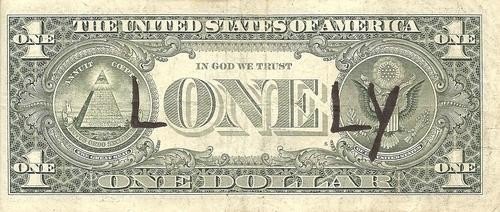 Even when artists make money, they don’t make money. SuttonBeresCuller (Distribution of Wealth, 2009
Even when artists make money, they don’t make money. SuttonBeresCuller (Distribution of Wealth, 2009
100 uncirculated one-dollar bills cut to portray the percentages received by the artists and their dealer.
46 x 11 x 6 inches )
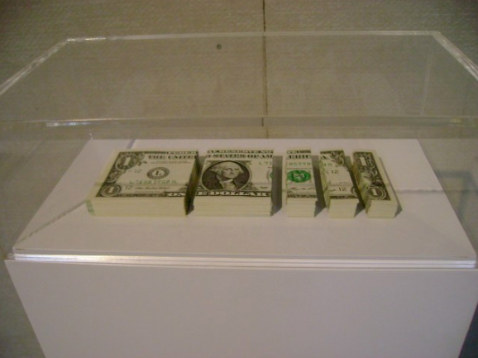 Of course there are exceptions, although most of the exceptions are dead. Andy Warhol‘s 1962 silk-screen painting 200 One Dollar Bills sold for $43.7 million at Sotheby’s in 2009. (Image via New York Times)
Of course there are exceptions, although most of the exceptions are dead. Andy Warhol‘s 1962 silk-screen painting 200 One Dollar Bills sold for $43.7 million at Sotheby’s in 2009. (Image via New York Times)
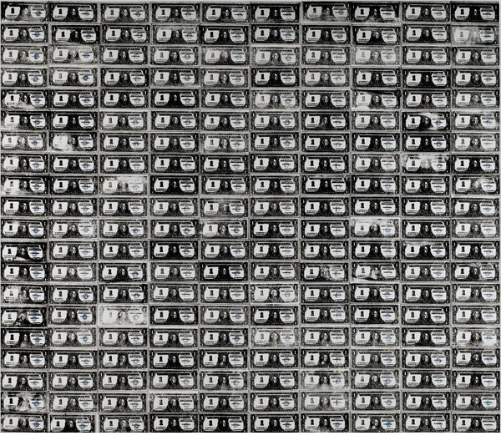 Tight as money is, collective action can make a difference. Mel Chin (Funded Dollar Bill)
Tight as money is, collective action can make a difference. Mel Chin (Funded Dollar Bill)
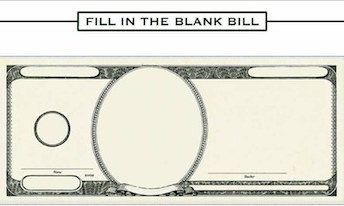 Inside a mess, there is always an opportunity. In 2007, Jack Daws instituted a penny upgrade, fabricating ten in gold. The
Inside a mess, there is always an opportunity. In 2007, Jack Daws instituted a penny upgrade, fabricating ten in gold. The
one he slipped into general circulation and never expected to see again
popped up two years later. (COUNTERFEIT PENNY, 2007
18-karat gold, copper plated, Edition of 10). (Stories here and here.)
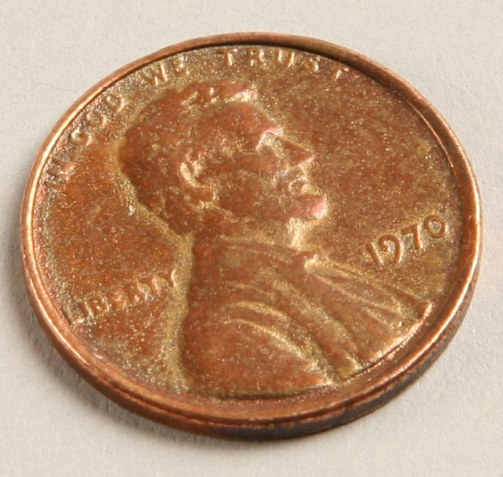 Finding a gold penny is once-in-a-lifetime discovery, and the one in our lifetimes has already been found. Back to out regular programming, where the rich get richer and everybody else gets the joker – Anonymous, in circulation.
Finding a gold penny is once-in-a-lifetime discovery, and the one in our lifetimes has already been found. Back to out regular programming, where the rich get richer and everybody else gets the joker – Anonymous, in circulation.
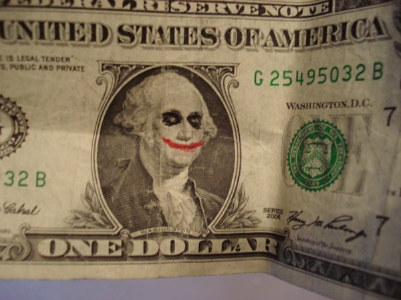
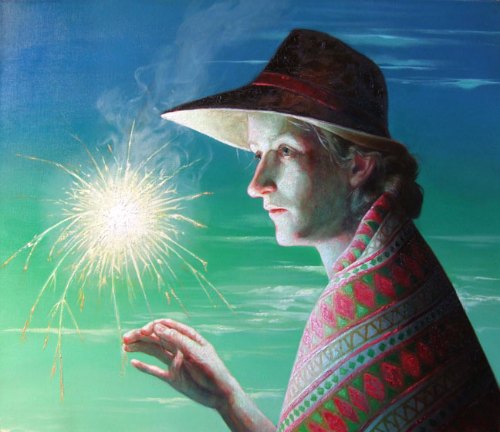
In 1949, David Park took his paintings to the dump. They were abstract in an Abstract Expressionist vein. With a clean slate, he used what he knew about the push and pull of moving paint around to return to the figure. Made of big, blunt brush-and-knife strokes, his quiet moments marked the beginning of Bay Area Figurative. In 1960, at age 49, he died of cancer.
Almost everyone I know who cares about art and lived in the Bay Area in the second half of the 20th Century considers his work a touchstone.
David Park (Image via)
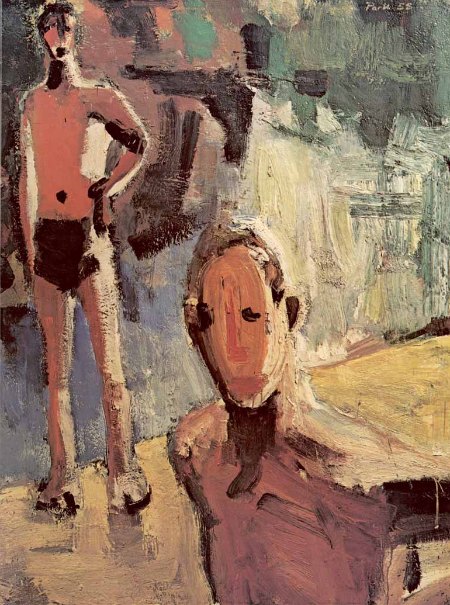 In the 21st Century, his influence is everywhere, or, as Auden wrote about Yeats, “he has become his admirers.”
In the 21st Century, his influence is everywhere, or, as Auden wrote about Yeats, “he has become his admirers.”
Julia Kuhl, for that quality of living in inside a head and stuck at an impasse, for the inadvertent tenderness.
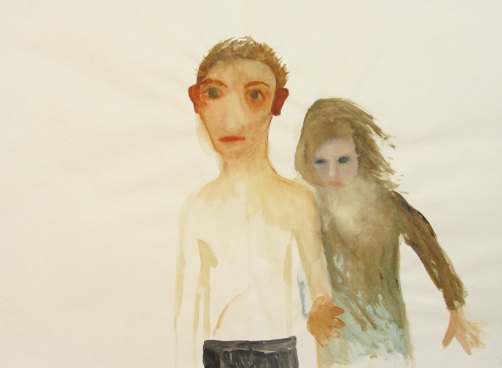 Peter F. Gross, for tactile intensity. (Anonymous Russian poet: “Can I help it if your bones rattle in my heavy, tender paws?”)
Peter F. Gross, for tactile intensity. (Anonymous Russian poet: “Can I help it if your bones rattle in my heavy, tender paws?”)
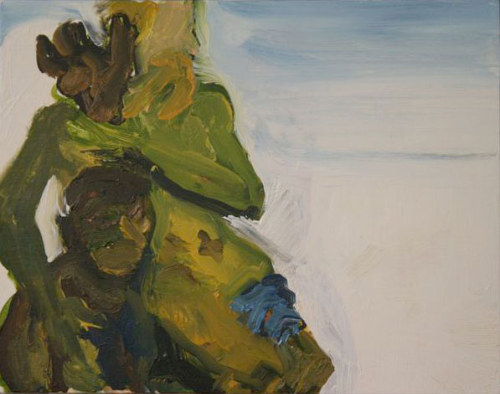 Mark Takamichi Miller – for bodies that own the air around them, without noticing it, and for big color.
Mark Takamichi Miller – for bodies that own the air around them, without noticing it, and for big color.
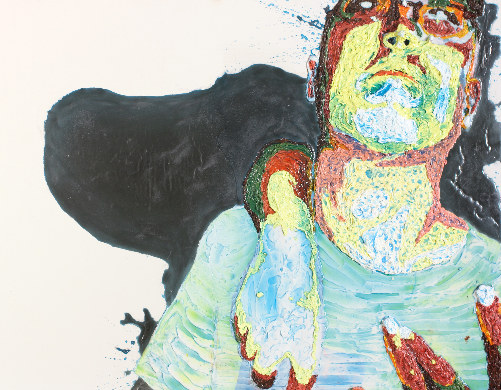 Mette Tommerup – What is the opposite of observant? A David Park figure.
Mette Tommerup – What is the opposite of observant? A David Park figure.
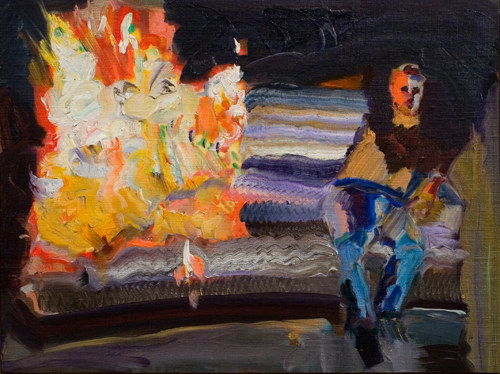 Brian Burke – stones in the river, lumpen proletariat in the sky.
Brian Burke – stones in the river, lumpen proletariat in the sky.
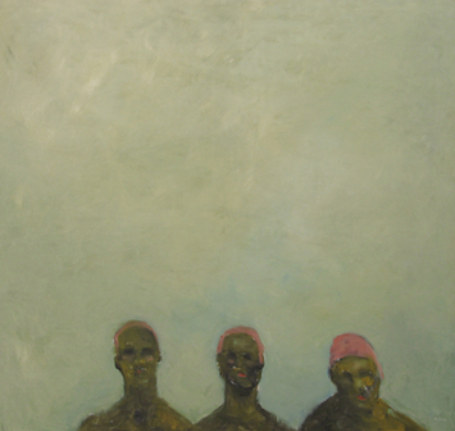
William S. Burroughs‘ idea of high romance:
If I had my way we’d sleep every night all wrapped around each other like hibernating rattlesnakes.
Connection creates wreckage:
 A happy hum
A happy hum
Luke Gilford from This Is A Race
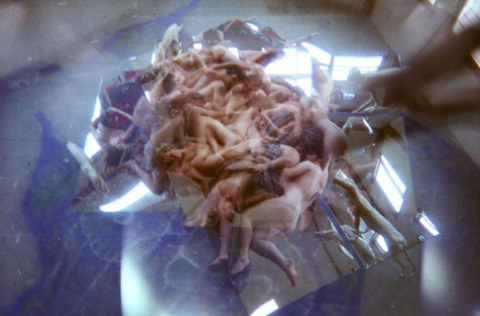 And choreographed symbology, life in death.
And choreographed symbology, life in death.
Peter Santino, self-portrait (Image after the jump, being not quite safe for work, depending on the work)
(For more on rattlesnakes, connected and otherwise, you want to read Gordon Grice’s Deadly Kingdom: The Book of Dangerous Animals. William Burroughs did. It’s probably where he got the image. )
Norman Lundin is slow to embrace the new. He stakes his studio practice in the pre-modernist 19th century, as an off-shoot of the Barbizon School with a hat tip to 17th Century Dutch still life. His palette is sliver-gray and mossy green. When he hits a hot note, it’s usually an emergency, like a fire.
The Fire at Petersons Crossing
oil / canvas, 2008
unframed: 38 x 86″
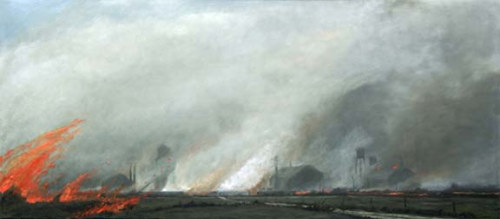 About the artist’s own life I know little, but his paintings live in the world as depressed solitaries. The he who is their unseen narrator drives alone on country roads. Usually it’s raining. If he stepped outside, his shoes would sink into muck. If there’s light ahead, he hasn’t reached it.
About the artist’s own life I know little, but his paintings live in the world as depressed solitaries. The he who is their unseen narrator drives alone on country roads. Usually it’s raining. If he stepped outside, his shoes would sink into muck. If there’s light ahead, he hasn’t reached it.
Tornado Weather Northeastern Wyoming oil / canvas, 2010
42 x 90″
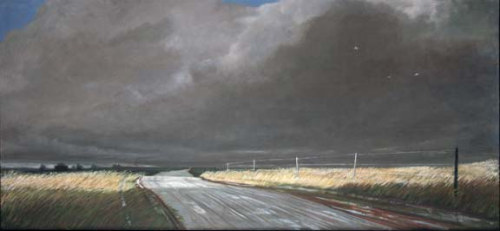 In describing his studio, the narrator allows himself a few flourishes. Like the Dutch before him, he can paint a bowl with the qualities of ceramic next to translucent glass and the dull sheen of polished tin. As a view beyond his leaded-glass windows, he can articulate spindly winter trees in a foggy purple haze.
In describing his studio, the narrator allows himself a few flourishes. Like the Dutch before him, he can paint a bowl with the qualities of ceramic next to translucent glass and the dull sheen of polished tin. As a view beyond his leaded-glass windows, he can articulate spindly winter trees in a foggy purple haze.
Studio in Half Light II
oil / canvas, 2009
31 x 91″
 The play of light interests the narrator more than what it plays upon. Light is never redemptive, but it’s worth the time it takes to notice its qualities. Objects are interchangeable, like roads or tables or nude women reclining on beds.
The play of light interests the narrator more than what it plays upon. Light is never redemptive, but it’s worth the time it takes to notice its qualities. Objects are interchangeable, like roads or tables or nude women reclining on beds.
Room with Three Jars oil / canvas, 2010
40″ x 66
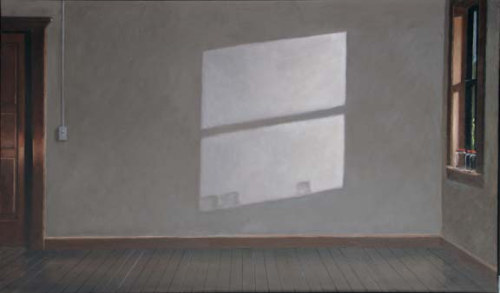 Here’s the entirety of Lundin’s artist statement:
Here’s the entirety of Lundin’s artist statement:
The less you have, the more important what is there becomes.
In the go-go part of the 1980s, when the well-heeled were drinking champagne from glass slippers at the Mary Boone Gallery and Robert Hughes was wringing his hands at the corrupt excess of it all, saying, for instance, that young Soho collectors had the “discrimination of vacuum cleaners,” back then, Doug and Mike Starn introduced the pathos of the beat-up photograph.
Starn Twins Macabre Still Life, 1983 (Image via)
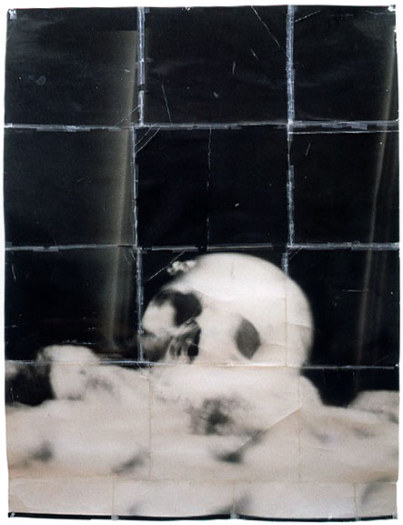 Nearly 30 years later, Sean McFarland‘s version of the seen-better-days photograph is far more modest, as befits his subject. Formerly known as the Golden State, California appears to have lost its luster.
Nearly 30 years later, Sean McFarland‘s version of the seen-better-days photograph is far more modest, as befits his subject. Formerly known as the Golden State, California appears to have lost its luster.
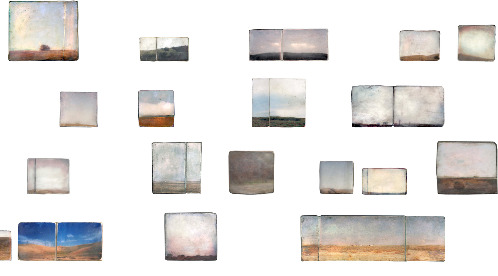
And how to weave with glass, bottle caps, license plates, light, film rolls, corks, spit and packing peanuts, peanut butter and jelly, fire.
Jack Daws – TWO TOWERS, 2003
Chromogenic print of artist-made construction from McDonald’s French fries and Heinz ketchup
photographed by Richard Nichol
50 x 40 inches, Edition of 10
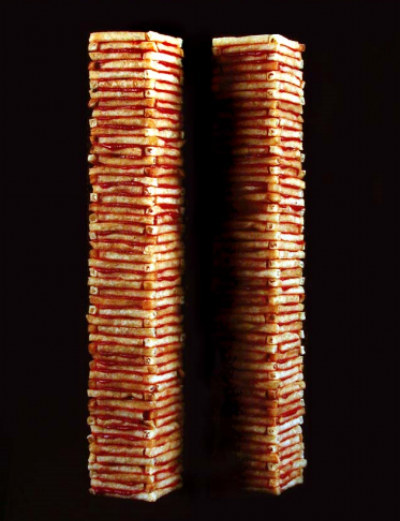 Toots Zynsky (image via)
Toots Zynsky (image via)
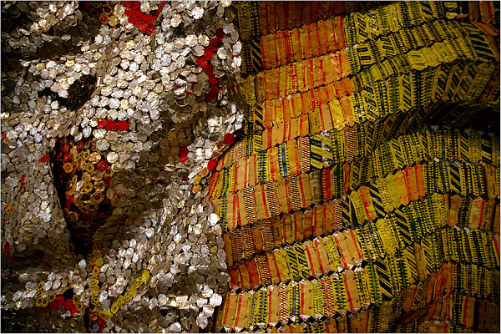 Ross Palmer Beecher – AUTO LOG CABIN QUILT, 2009
Ross Palmer Beecher – AUTO LOG CABIN QUILT, 2009
Aluminum license plates, tin, Hot Wheel cars and mixed media, 76 x 87 inches
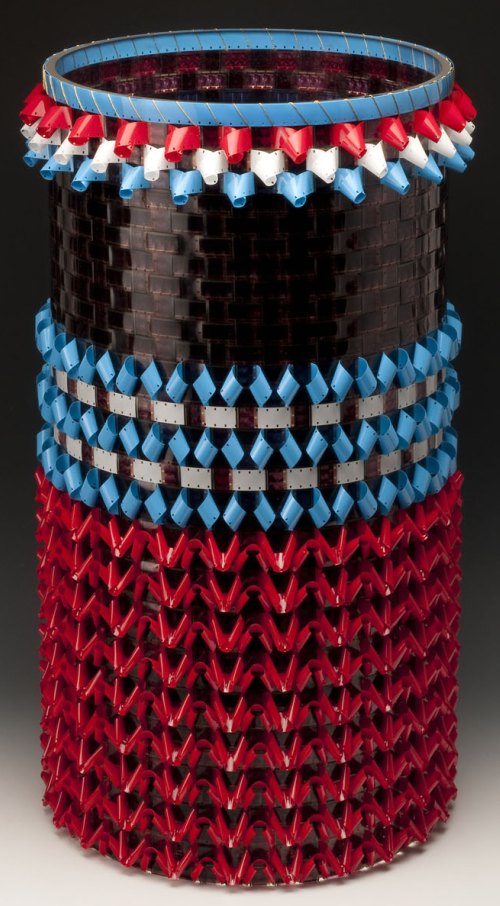 Claude Zervas – d6,
Claude Zervas – d6,
custom electronics and programming, LEDs, high/flex wire, stainless steel wire,
82″h x 22″w x 7″d
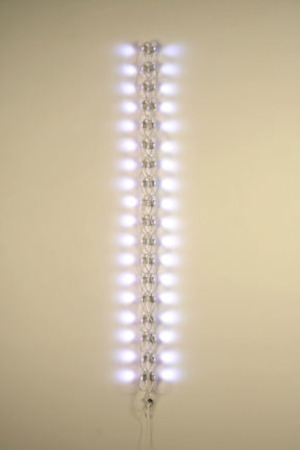 Marita Dingus – Glass Baby With Corks All Around
Marita Dingus – Glass Baby With Corks All Around
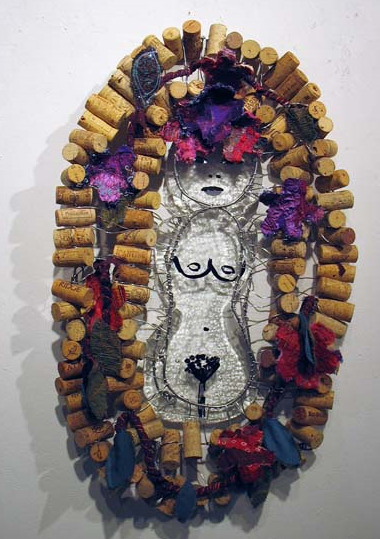 Alex Schweder La – Spit Skin,
Alex Schweder La – Spit Skin,
Saliva and biodegradable loose fill packing peanuts,
96″ x 42″ x 120″ in December 2006, 18″ x 48″ x 72″
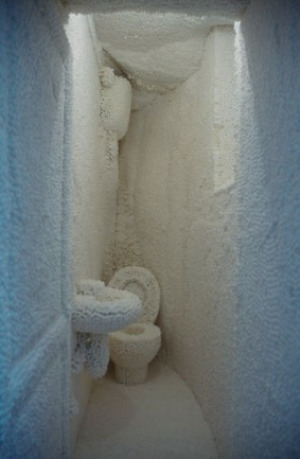 Ryan Pfluger – Bagged Lunch, 2007
Ryan Pfluger – Bagged Lunch, 2007
an ArtsJournal blog


